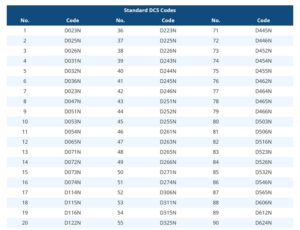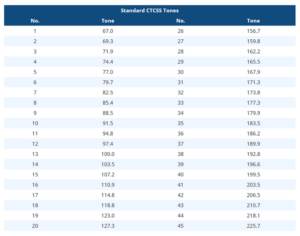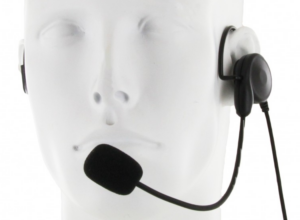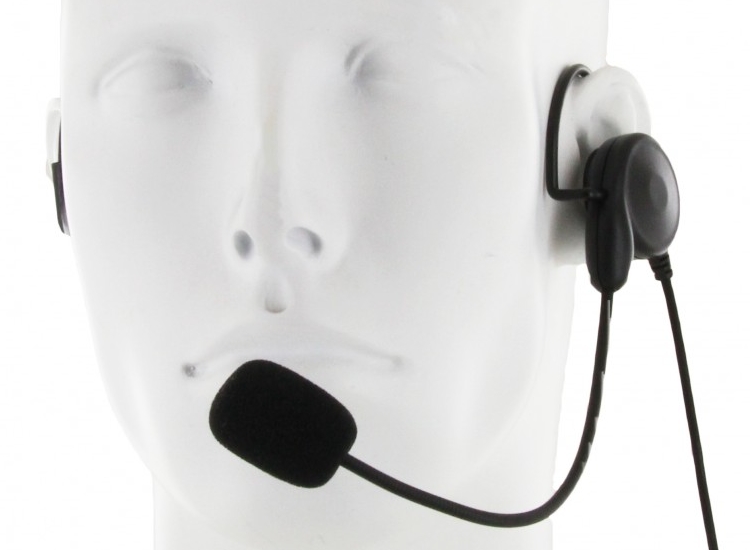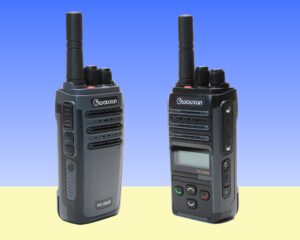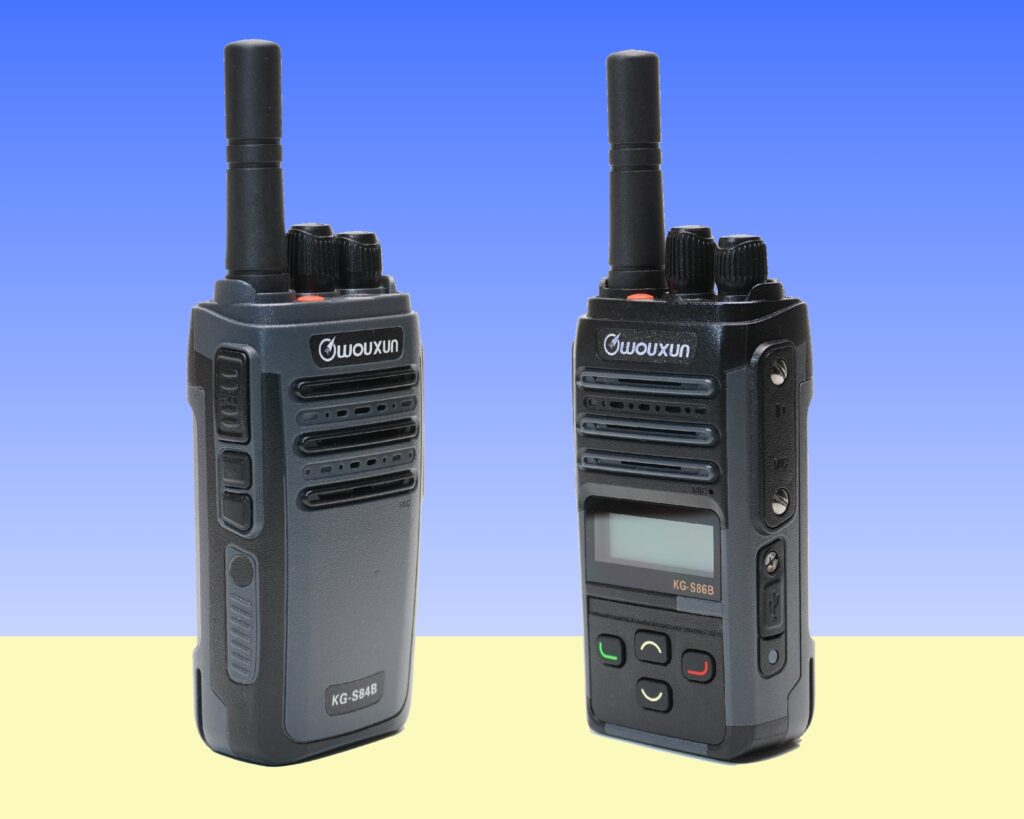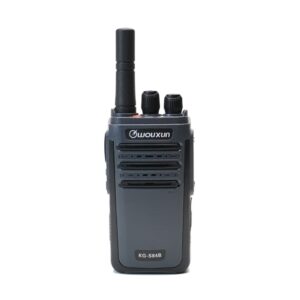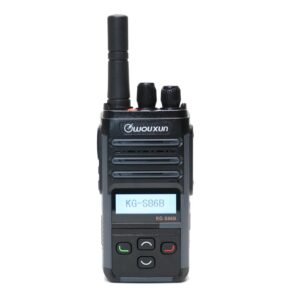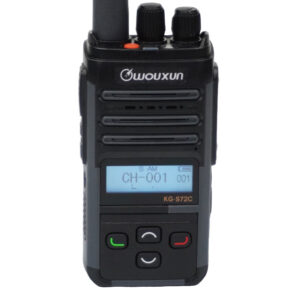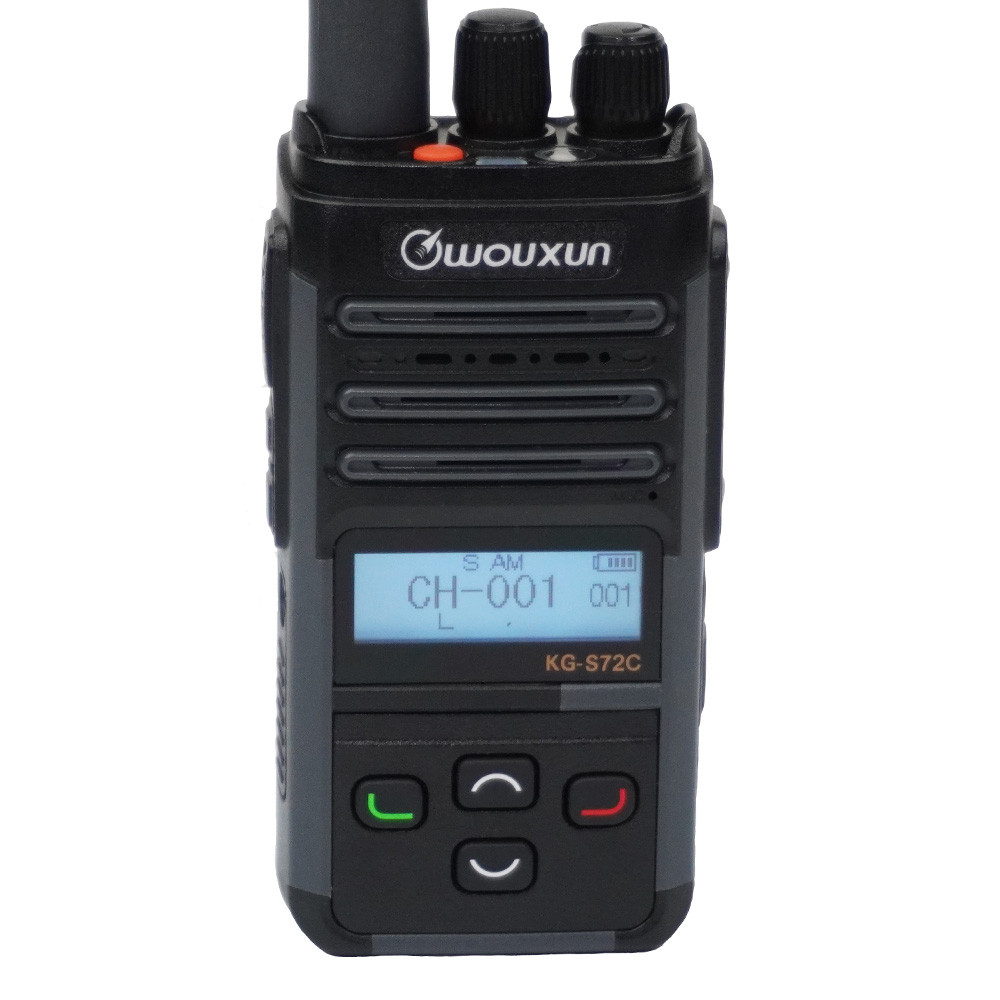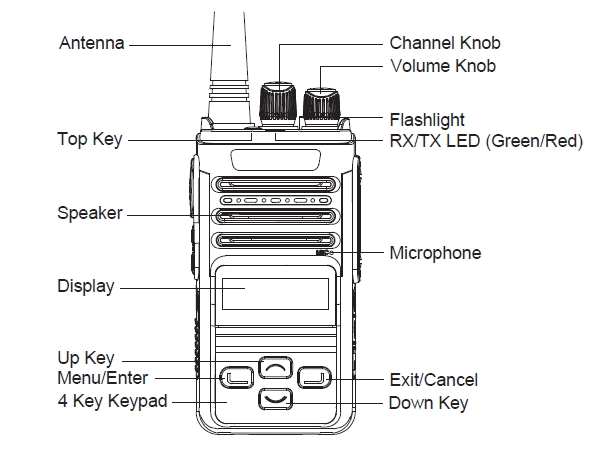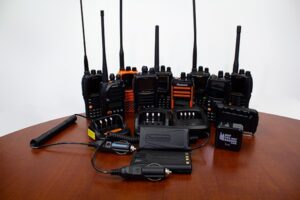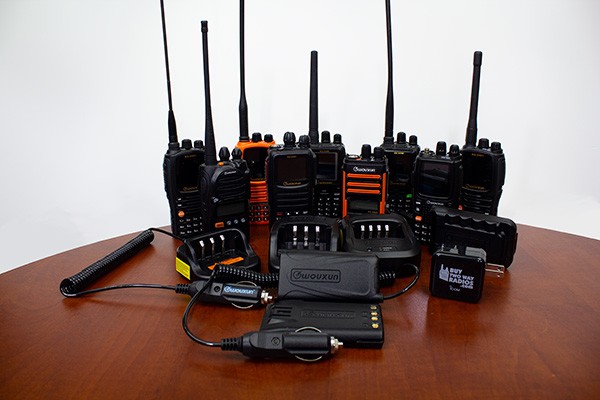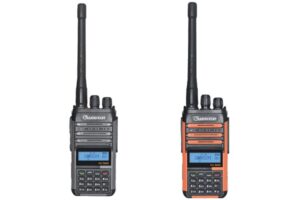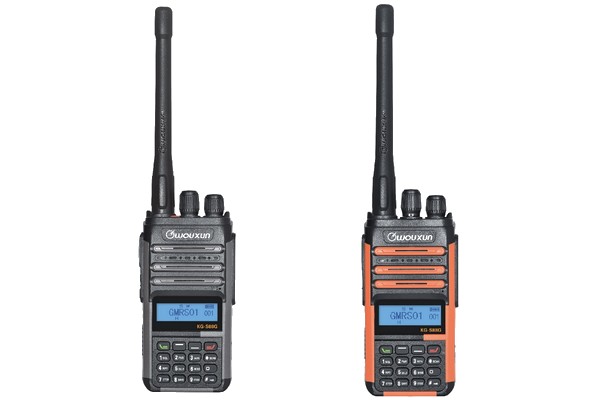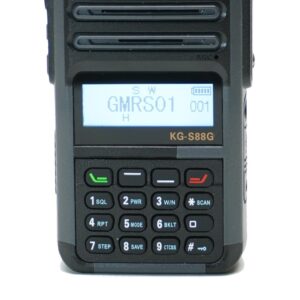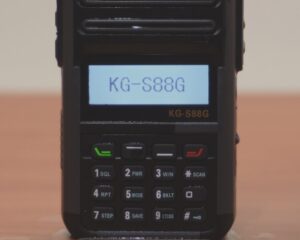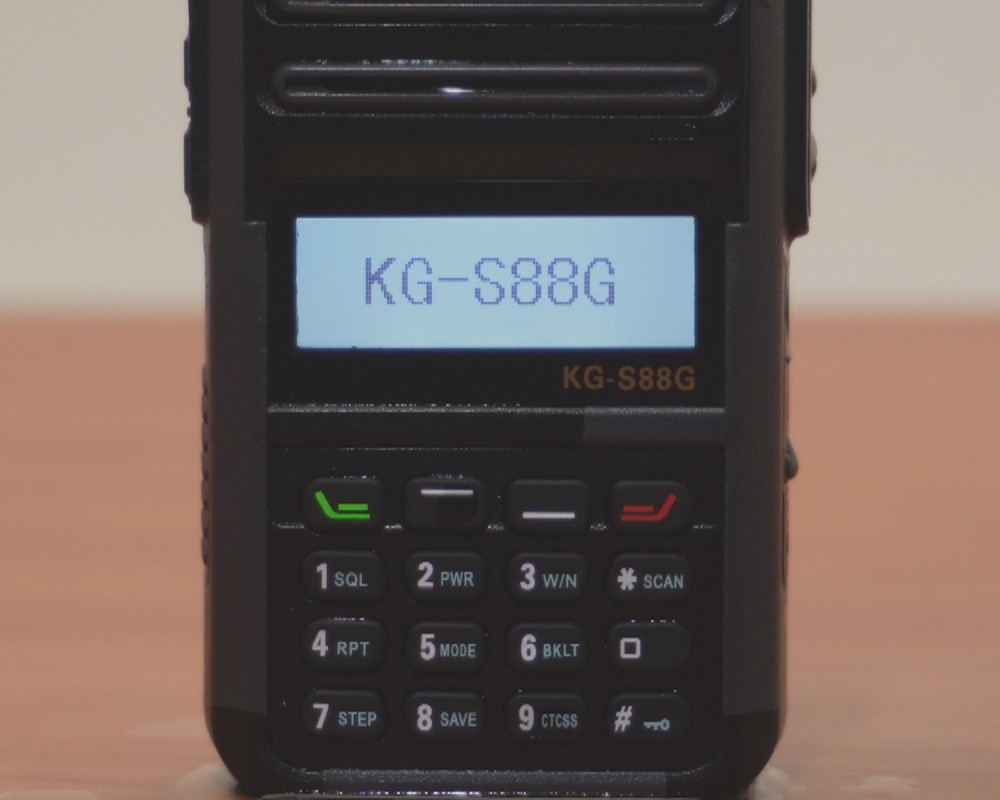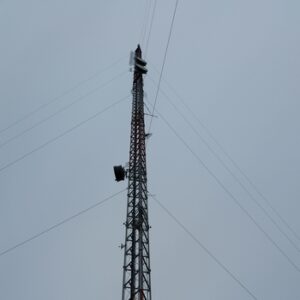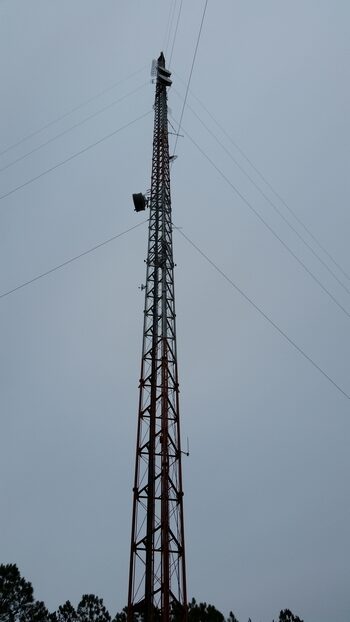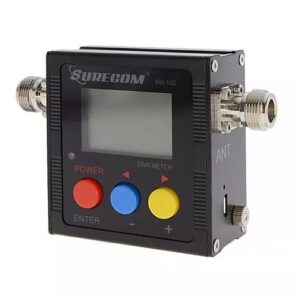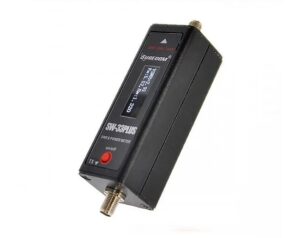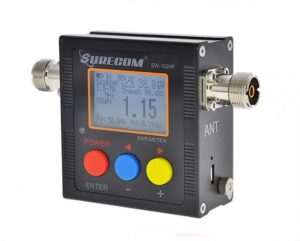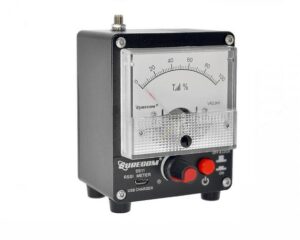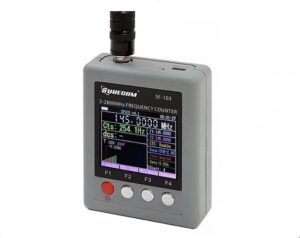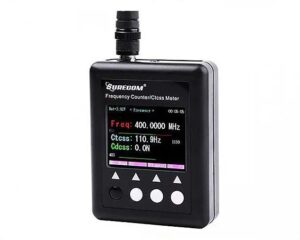DCS is an acronym for Digital Coded Squelch. It is a set of digital codes that act as filters to eliminate interference from unwanted transmissions originated by other individuals or groups who are operating on the same channel or frequency. DCS codes are also commonly known as Interference Eliminator codes, Digital Private Line (DPL) codes or Digital Quiet Talk (DQT) codes.
Some consumer and business radios that support DCS codes may assign a number to each code within the radio menu for selection and programming options. Other radios simply list the codes themselves and allow you to choose them directly.
DCS codes ending in N are positive. Negative DCS codes end in I.
As it is with CTCSS tones, there is no universal standard for DCS tones or their number assignments in a radio. Each radio manufacturer decides what codes their radios will support and how those codes will be implemented in their products. Also, some radios may only support certain codes and may not support others.
Listed below is a chart of DCS codes often used for two way radios, along with common code number assignments for radios that use them. Again, these code number assignments are only a general guide and may vary between different radios. Consult the user manual for your radio for the specific codes supported.
Common DCS Codes
| Common DCS Codes | |||
|---|---|---|---|
| No. | Code | No. | Code |
| 1 | 023 | 43 | 315 |
| 2 | 025 | 44 | 331 |
| 3 | 026 | 45 | 343 |
| 4 | 031 | 46 | 346 |
| 5 | 032 | 47 | 351 |
| 6 | 043 | 48 | 364 |
| 7 | 047 | 49 | 365 |
| 8 | 051 | 50 | 371 |
| 9 | 054 | 51 | 411 |
| 10 | 065 | 52 | 412 |
| 11 | 071 | 53 | 413 |
| 12 | 072 | 54 | 423 |
| 13 | 073 | 55 | 431 |
| 14 | 074 | 56 | 432 |
| 15 | 114 | 57 | 445 |
| 16 | 115 | 58 | 464 |
| 17 | 116 | 59 | 465 |
| 18 | 125 | 60 | 466 |
| 19 | 131 | 61 | 503 |
| 20 | 132 | 62 | 506 |
| 21 | 134 | 63 | 516 |
| 22 | 143 | 64 | 532 |
| 23 | 152 | 65 | 546 |
| 24 | 155 | 66 | 565 |
| 25 | 156 | 67 | 606 |
| 26 | 162 | 68 | 612 |
| 27 | 165 | 69 | 624 |
| 28 | 172 | 70 | 627 |
| 29 | 174 | 71 | 631 |
| 30 | 205 | 72 | 632 |
| 31 | 223 | 73 | 654 |
| 32 | 226 | 74 | 662 |
| 33 | 243 | 75 | 664 |
| 34 | 244 | 76 | 703 |
| 35 | 245 | 77 | 712 |
| 36 | 251 | 78 | 723 |
| 37 | 261 | 79 | 731 |
| 38 | 263 | 80 | 732 |
| 39 | 265 | 81 | 734 |
| 40 | 271 | 82 | 743 |
| 41 | 306 | 83 | 754 |
| 42 | 311 | ||
Some manufacturers support an expanded list of DCS codes. Wouxun radios typically feature a set of 105 codes, and some models support both positive and negative codes for maximum flexibility.
The List below is a chart of DCS codes that Wouxun typically supports in its line of radios, along with their commonly used number assignments. Note that all the codes in the chart end with N. This designates a positive code. Some radios also support the option to use negative codes. If using a negative code, you would simply replace the N with an I.
Wouxun DCS Codes
| Wouxun DCS Codes | |||||
|---|---|---|---|---|---|
| No. | Code | No. | Code | No. | Code |
| 1 | D023N | 36 | D223N | 71 | D445N |
| 2 | D025N | 37 | D225N | 72 | D446N |
| 3 | D026N | 38 | D226N | 73 | D452N |
| 4 | D031N | 39 | D243N | 74 | D454N |
| 5 | D032N | 40 | D244N | 75 | D455N |
| 6 | D036N | 41 | D245N | 76 | D462N |
| 7 | D023N | 42 | D246N | 77 | D464N |
| 8 | D047N | 43 | D251N | 78 | D465N |
| 9 | D051N | 44 | D252N | 79 | D466N |
| 10 | D053N | 45 | D255N | 80 | D503N |
| 11 | D054N | 46 | D261N | 81 | D506N |
| 12 | D065N | 47 | D263N | 82 | D516N |
| 13 | D071N | 48 | D265N | 83 | D523N |
| 14 | D072N | 49 | D266N | 84 | D526N |
| 15 | D073N | 50 | D271N | 85 | D532N |
| 16 | D074N | 51 | D274N | 86 | D546N |
| 17 | D114N | 52 | D306N | 87 | D565N |
| 18 | D115N | 53 | D311N | 88 | D606N |
| 19 | D116N | 54 | D315N | 89 | D612N |
| 20 | D122N | 55 | D325N | 90 | D624N |
| 21 | D125N | 56 | D331N | 91 | D627N |
| 22 | D131N | 57 | D332N | 92 | D631N |
| 23 | D132N | 58 | D343N | 93 | D632N |
| 24 | D134N | 59 | D346N | 94 | D645N |
| 25 | D143N | 60 | D351N | 95 | D654N |
| 26 | D145N | 61 | D356N | 96 | D662N |
| 27 | D152N | 62 | D364N | 97 | D664N |
| 28 | D155N | 63 | D365N | 98 | D703N |
| 29 | D156N | 64 | D371N | 99 | D712N |
| 30 | D162N | 65 | D411N | 100 | D723N |
| 31 | D165N | 66 | D412N | 101 | D731N |
| 32 | D172N | 67 | D413N | 102 | D732N |
| 33 | D174N | 68 | D423N | 103 | D734N |
| 34 | D205N | 69 | D431N | 104 | D743N |
| 35 | D212N | 70 | D432N | 105 | D754N |





